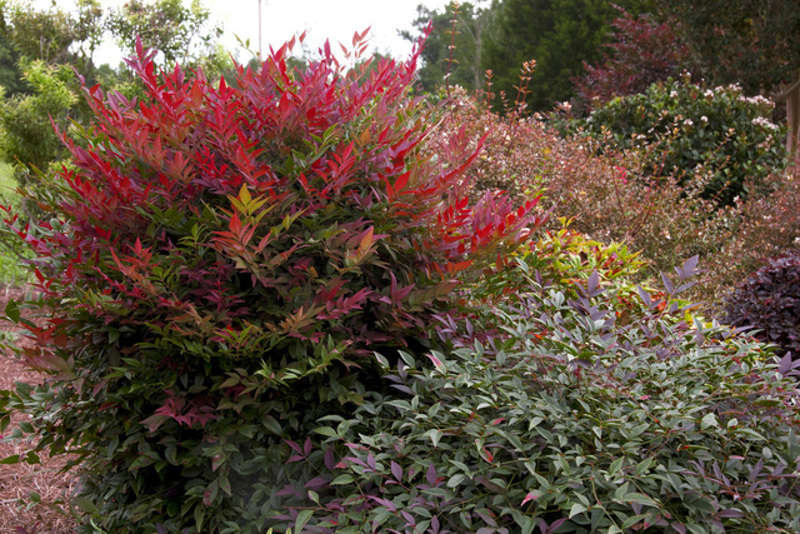Nandina is a low-maintenance shrub with year-round appeal, offering lacey foliage, white flowers and red fall berries. This easy-care plant asks little in the way of care but will provide the lushest display in your yard or garden with a light annual application of fertilizer.
Adding compost at planting time and in fall will help boost the soil’s nitrogen that Nandina needs for ideal growth.

If your established nandina leaves are turning yellow, and are not being overwatered, it could signal chlorosis, from a lack of acidity in the soil. Test the soil with a kit, and if the soil is too alkaline, you can amend it as described below.
How to Fertilize Nandina
Nandina prefer a soil with a pH ranging from 6.0 to 7.5, or acidic to slightly alkaline.
If a soil test has confirmed that your soil is well within the range, you can use an all-purpose balanced fertilizer. Look for an N-P-K ratio such as 10-10-10 or 20-20-20 and follow package directions. Another option is a 3-1-2 or 24-8-16 for trees and shrubs. Whichever fertilizer you choose to use, follow the instructions on the package closely.
If a soil test indicates your soil is alkaline and needs to be more acidic for your Nandina, consider a light application of fertilizer labeled for acid-loving plants or evergreens. Follow the directions on application, erring on the light side. Never use more than indicated and consider halving the concentration.
Sprinkle the fertilizer evenly throughout the root zone of the Nandina, not only around the trunk. Take care not to let the fertilizer touch the trunk. Water the entire root zone well to dilute and disperse the fertilizer. If it is too concentrated, the fertilizer could harm the plant by burning the roots.
Another option would be to add chelated iron to your garden soil around the Nandina once yearly in spring, and then it is possible to use a balanced ornamental shrub fertilizer once yearly with less concern about burning the roots. If your plant’s leaves are turning yellow due to chlorosis, you can also find chelated iron sprays which can be applied from spring through fall as a quicker, but short-term fix.
Best Time to Fertilize Nandina
In general spring is the best time to fertilize Nandina. There are specific conditions that apply, however.
For instance, if the soil is nutrient-poor or very sandy, your plant will appreciate the addition of compost and/or soil conditioner: at planting and as a top-dressing in the fall.
If your soil is loamy and fertile, Nandina will appreciate a once-yearly application of slow-release fertilizer for general growth in spring. For really powering-up the growth, say, if the soil is still somewhat poor or the plant is in a container, you can follow up with balanced liquid fertilizer once a month from spring through August.
Best Fertilizer for Nandina
The best fertilizer for your Nandina will depend on your growing conditions, specifically the soil. A soil test will confirm if your soil is in the correct range for Nandina. If it is, you can choose a general fertilizer for ornamental garden shrubs with a balanced nutrient profile, such as 10-10-10 or 3-1-2.
If your soil is testing as too alkaline, you can raise the acidity yearly with a fertilizer for evergreens or acid-loving plants. Be careful not to over-apply or concentrate in one area.
Iron chelate spray can be used to increase acidity quickly for the season to amend chlorotic yellow leaves.
Compost will be a welcome addition to clay-filled, infertile, or sandy locations. Balanced liquid fertilizer can be used for containerized Nandina.
 |
Author Erica Browne Grivas - Published 11-15-2021 |
